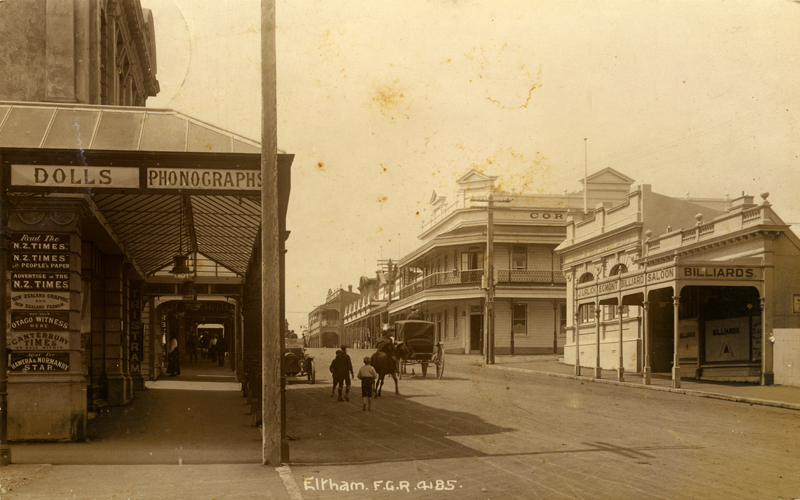
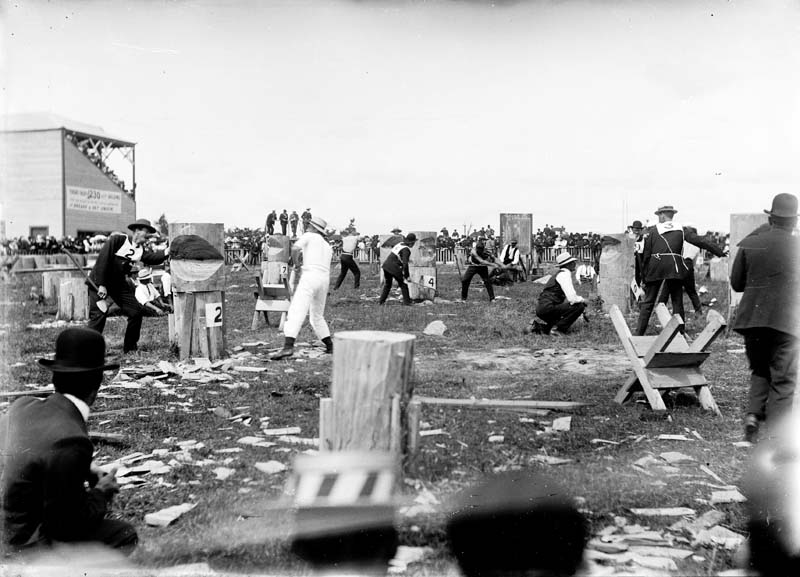
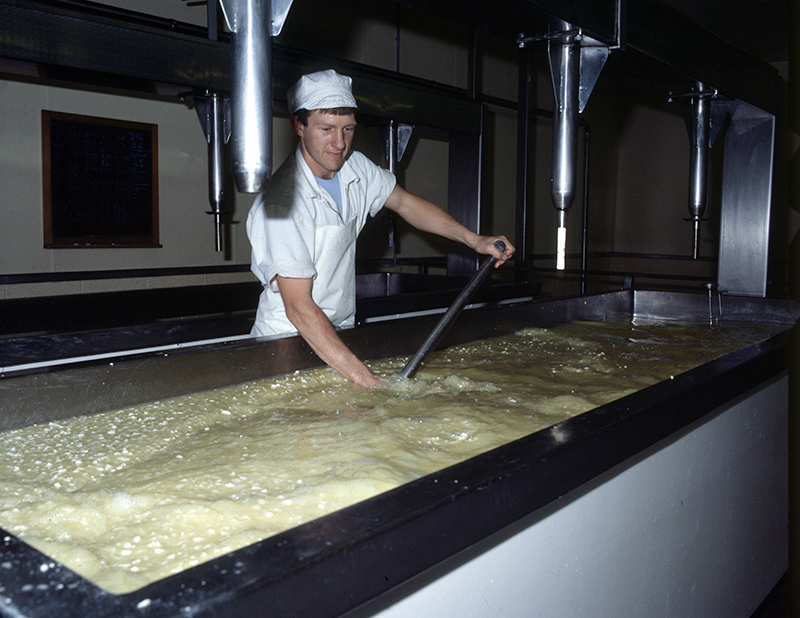
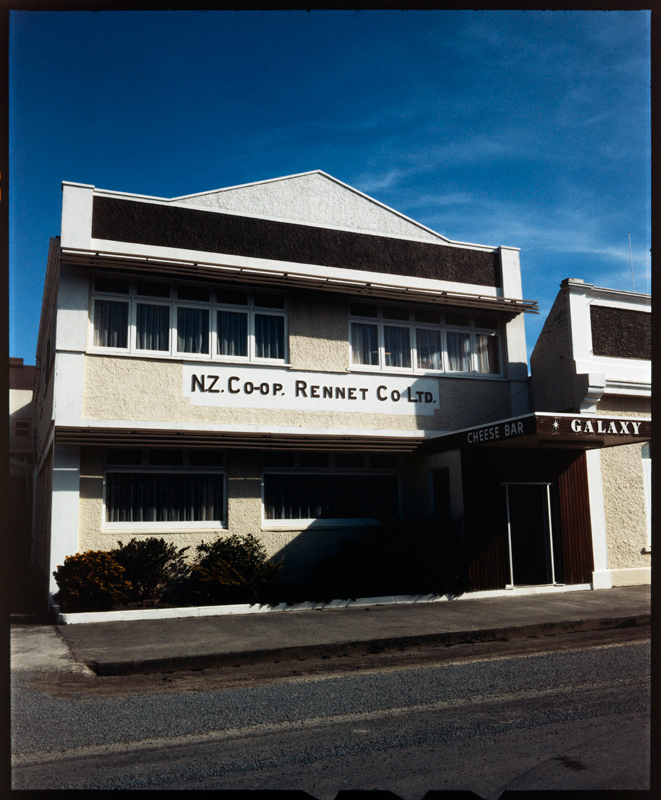
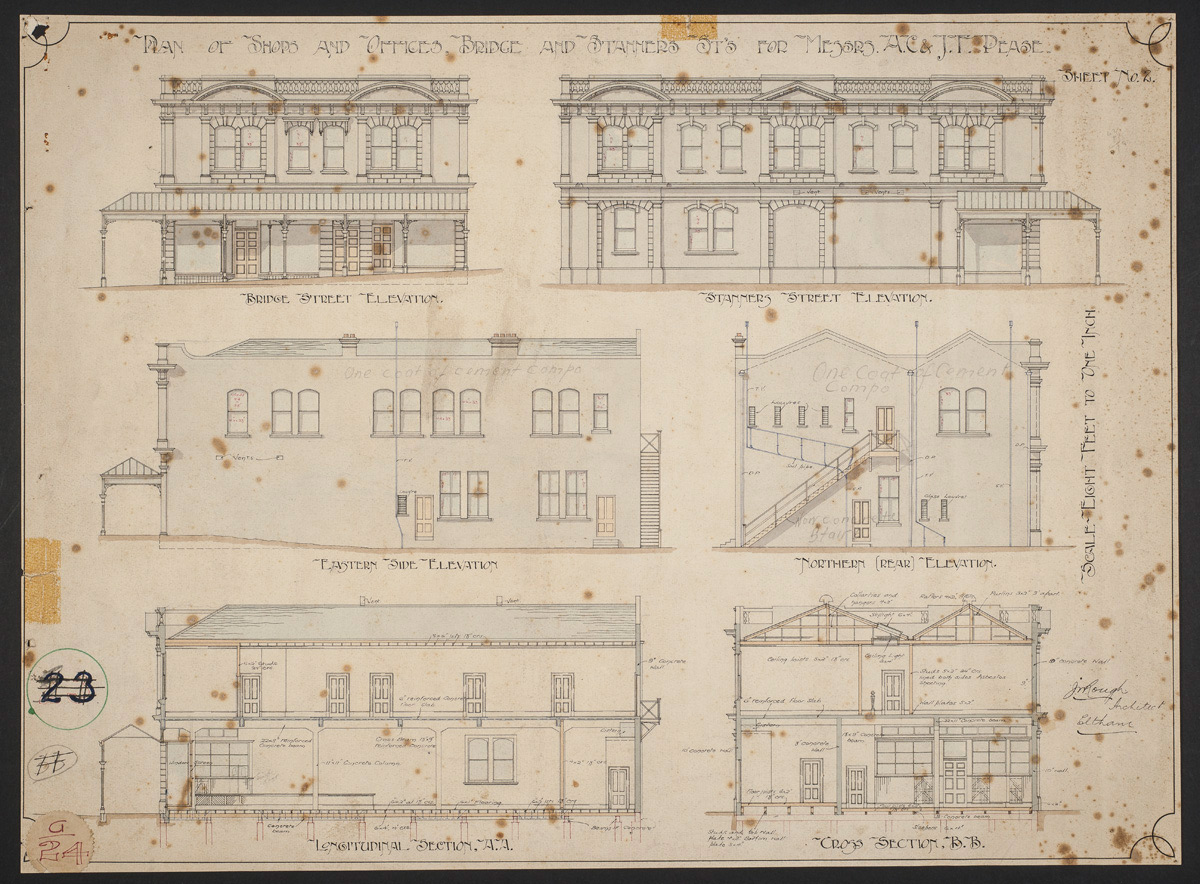
Eltham is the first town in New Zealand to have a water reservoir painted like a round of cheese. And it's renowned for being at the forefront in many other areas, some just as cheesy, say historians Don Drabble and Karen Christian. Backed up by a brochure they helped put together, the Eltham and Districts Historical Society members can pinpoint at least 10 other firsts for the central Taranaki town.
The classic pound of butter was first made at Eltham. Its maker was dairy industry founder Chew Chong, who used to sell butter in pats and blobs of no conventional size in his general stores. These irregular shapes were made from a blend of different butters collected from farms and called milled butter. Chong saw the problem that one faulty lot of butter would contaminate the rest, so he decided to make his own from scratch. The result was the forever recognisable pound of fresh butter and New Zealand's first commercial butter factory, which opened in Eltham in December 1887. Chong was a stickler for cleanliness and order, so his factory included a cooling system for the storage of cream.
Eltham was also the first town in New Zealand to get a tarmacadam street in 1906. The man behind this was Charles Anderson Wilkinson, who was on the Eltham Borough Council at the time. During a trip to the United States in 1902, Wilkinson was so impressed by the road surfacing methods he convinced his fellow councillors to seal a deal for Bridge Street. A sign standing on the corner of High and Bridge streets tells the background of that early feat.
Not far away was the New Zealand Co-Op Rennet Company. In 1916, it became the first New Zealand factory to produce a commercially viable version of rennet, which is used in the cheese-making process.
During the formative days of the country's dairy industry, rennet was imported. But during World War One shipping was seriously disrupted, forcing rennet prices up to 50 pounds per keg. Trials in Dunedin and at the Pātea Freezing Works produced rennet that was too weak for cheese making. The trials then moved to the Mangatoki Dairy Company, where C. Cooper had previously produced a satisfactory form of rennet. This continued and the operations were shifted to Eltham, where premises were rented on a site that used to be home to Wilkinson's Maxwell car agency.
Then, in 1924, Eltham chemist G.H.P Fitzgerald embraced the experiment, using his scientific knowledge to perfect the recipe and method of using calf stomach lining to make the product. He was so successful that his way of manufacturing rennet was closely followed for 37 years.
In 1951, the first trial manufacture of blue vein cheese was carried out successfully and proved commercially viable, once again putting Eltham at the forefront of the dairying industry. By 1956, the company was making up to 98 tons (88,904 kilograms) of this strange-hued cheese. "People were suitably astonished," Don Drabble remembers. "Eltham was just a backwater then." These days, many different types of blue vein and a huge variety of cheeses can be bought at the Fonterra Cheese Bar, opposite the factory on Bridge Street.
The Pease Building stands as another sturdy example of Eltham ingenuity. "It was the first building of its type built out of Europe," says Don Drabble. "It's basically a building built on stilts." Not skinny wooden ones, but huge legs of solid concrete, provided by mercantile giant C.A. Wilkinson.
Don says the whole multi-storey structure, which stands firm on the corner of Stanners and Bridge streets, was made of reinforced concrete with a suspended ground floor. "When they made Stanners Street, they constructed retaining walls, built the building and back-filled the whole thing with clay."
But back in 1909, Eltham's building inspectors were worried whether the Duffill and Rough designed building would be safe. "There was so much controversy about this building that the architect had to send the plans to Auckland for approval. They came back with a big tick."
New Zealand's Veterinary Club group system has its origins in Eltham. In 1937, Lincoln College veterinary surgeon Alan Leslie was brought to the town to work for a group formed by five local dairy companies. The vet group's first base was the laboratory of the NZ Rennet Company, then the Eltham Dairy Company and is now in the town's old courthouse. Leslie left the group in 1947 to become chief executive officer for the then newly formed Veterinary Services Councils. There are still vet group businesses all over New Zealand.
In 1901, Eltham held the first ever World Axemen's Carnival. Muscled men from all over New Zealand, Australia and further afield flocked to the Taranaki town on Boxing Day each year. In 1911, Charles Wilkinson organised Whanganui photographer Charles F. Newham to make a 1000 foot (300 metre) movie of the carnival. This was shown at the Wilkinson Picture Hall two weeks later in January 1912.
One of New Zealand's most well-known insurance companies has its roots in Eltham. On 9 April 1904, a meeting was held in the town's Athenaeum Hall to find a way to get lower insurance rates for farming folk. The idea of forming the Taranaki Farmers' Mutual Fire Insurance Association was floated and embraced by farmers, and Lord Ranfurly signed a warrant to operate on 13 July that year.
On 1 April 1978 the association merged with the Primary Industries Insurance Company of Palmerston North and the South Island Farmers' Mutual Insurance Association. It now operates FMG (formerly Farmers' Mutual Group), and has offices nationwide.
Taranaki's famous helicopter pilot, Alan Beck, has also made his mark for Eltham. The flying man went to Eltham in 1966 to operate a ground weed-spraying unit and two years later he began his own business. But Beck had his eyes on the sky not the earth, so hired a helicopter for four years. This was an interim measure until a licence was granted, enabling the firm to get its own chopper. In May 1977, Beck Helicopters bought a Bell Jet Ranger, the first to be used for agricultural work in New Zealand.
Searching for one last first, Don Drabble and Karen Christian uncover a dubious claim to fame. "We were the first in New Zealand to have an anthrax scare after September 11," Karen says. That happened on 16 November 2001, when a suspicious powder puffed from a mailbag in the Eltham Post Shop. Worker Paula Grant was sorting the mail when unidentified powder drifted through the air. She was taken away for decontamination at the nearby fire station, while her son Jai (aged 6) continued on a school trip to New Plymouth and was later taken to Taranaki Base Hospital.
A few days later, tests confirmed the substance was not anthrax, but had come from the internal lining of the mailbag. Senior Sergeant Frank Grant, whose wife and son were at the centre of the scare, had always felt certain the powder would not have been the deadly disease. "I do not think Bin Laden would be concerned about Eltham," he said at the time. He was right – but the anthrax alert certainly put the wee town on the world map for a few days.
Andrews, H.J. (1959). The history of Eltham, New Zealand: cradle of the dairy export industry. Eltham: Eltham Borough Council.
Standish, R. (1984). Eltham: One Hundred Years. Eltham: Eltham Centennial Committee.
Eltham and Districts Historical Society (2000). Eltham & districts, then and now: a millennium project. Stratford: Eltham and Districts Historical Society.
Please do not reproduce these images without permission from Puke Ariki.
Contact us for more information or you can order images online here.